Beating the heat: Common car issues in hot weather

Canva
Beating the heat: Common car issues in hot weather
A car sits on a road in the hot sun.
As the scorching heat of summer settles in, it not only brings along beach trips and barbecues but also a unique set of challenges for car owners. Hot weather can take a toll on our vehicles, causing a range of car issues that can turn a pleasant drive into a frustrating experience. Way.com has explored the common problems cars face during hot weather and provides practical tips on how to combat them effectively. So, fasten your seatbelts and get ready to discover the secrets of keeping your car cool and cruising smoothly under the scorching summer sun!
![]()
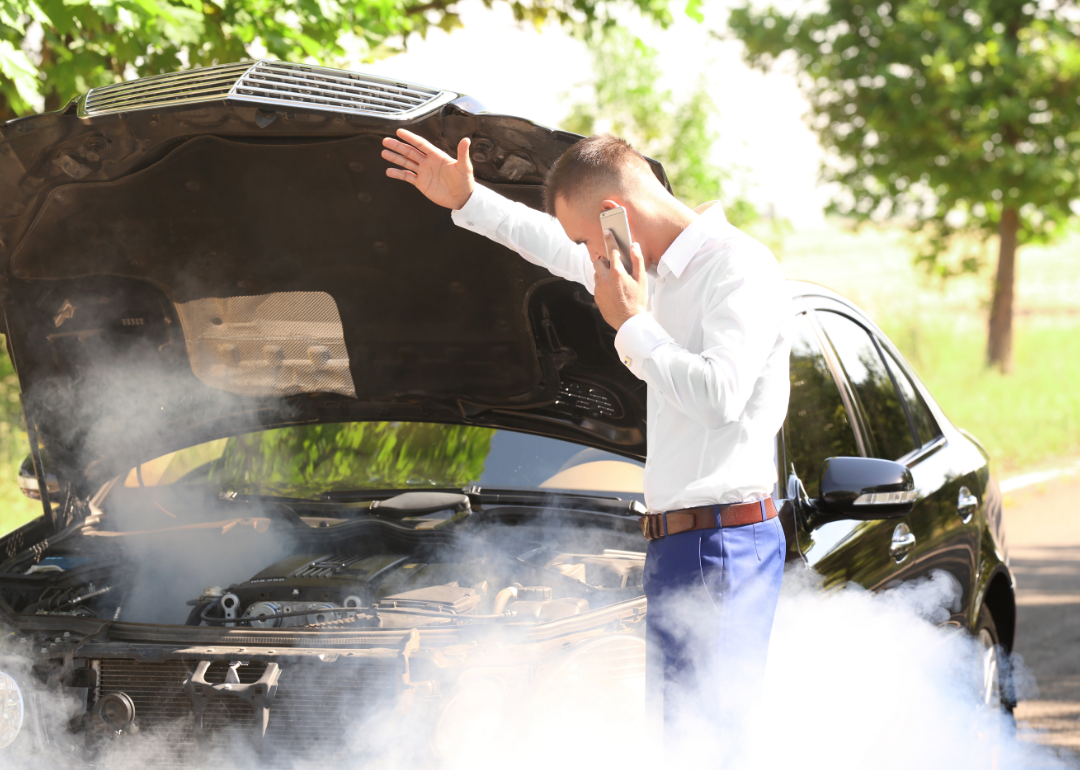
Canva
Overheating engines
A man calls for help as his overheated car billows smoke.
The relentless summer heat can push your car’s engine to its limits, resulting in the dreaded problem of overheating. This issue arises when the cooling system fails to regulate the engine’s temperature, leading to potential damage and even engine failure. Several factors can cause this problem:
Insufficient coolant levels
Inadequate coolant levels are a primary culprit behind engine overheating. It is crucial to regularly check and top up the coolant levels to ensure optimal performance. Additionally, the coolant should be replaced as recommended by the manufacturer.
Faulty radiator
A malfunctioning radiator can hinder the engine’s cooling process, exacerbating the risk of overheating. Leaks, clogs, or damaged radiator fins can impede the flow of coolant, causing the engine to overheat. Regular maintenance and inspections can help identify and rectify any radiator issues.
Worn-out belts and hoses
As temperatures rise, belts and hoses in your car’s cooling system can become brittle and prone to damage. Cracked or loose belts, as well as deteriorated hoses, can lead to coolant leaks and reduced cooling efficiency. Regular inspections and timely replacements are essential to prevent such issues.
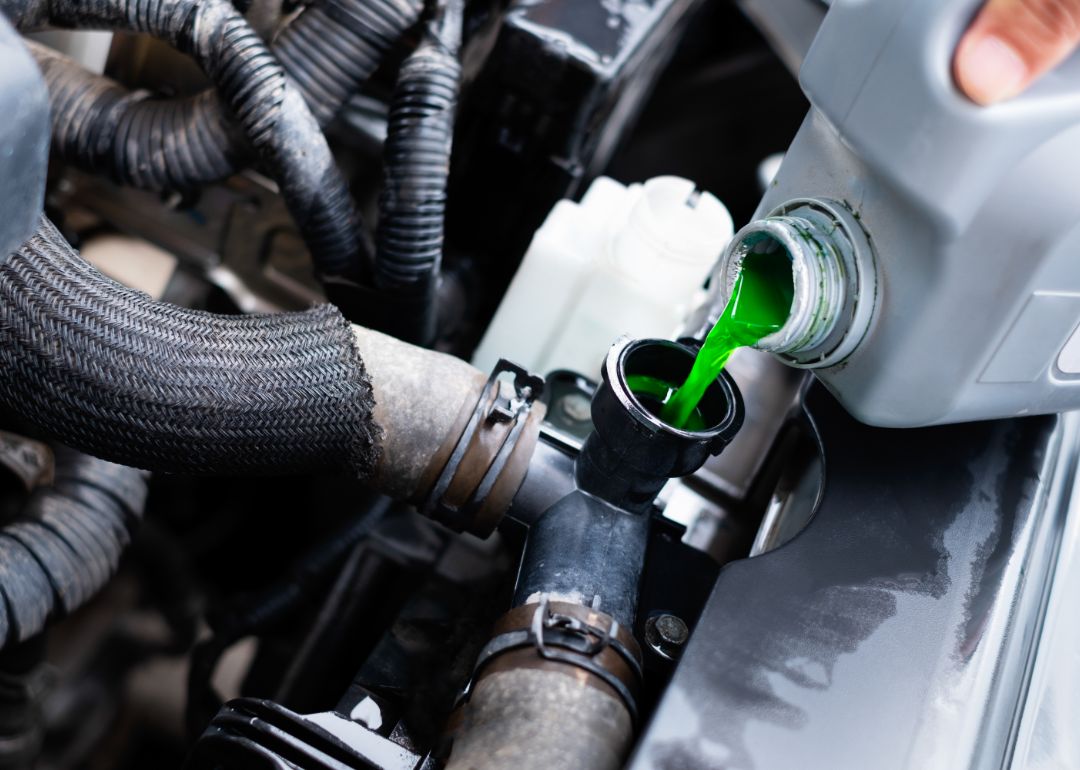
tk
Solutions to combat overheating of engines
Green automobile coolant is poured from a grey container.
Regular maintenance
Schedule routine check-ups to identify any underlying issues before they escalate. Inspect coolant levels, radiator condition, and water pump functionality.
Keep your car hydrated
Always make sure that your car has a sufficient coolant supply. Remember to use the recommended coolant type for your vehicle.
Clean radiator fins regularly
Remove dirt and debris from the radiator fins regularly. This will enhance airflow and improve cooling efficiency.
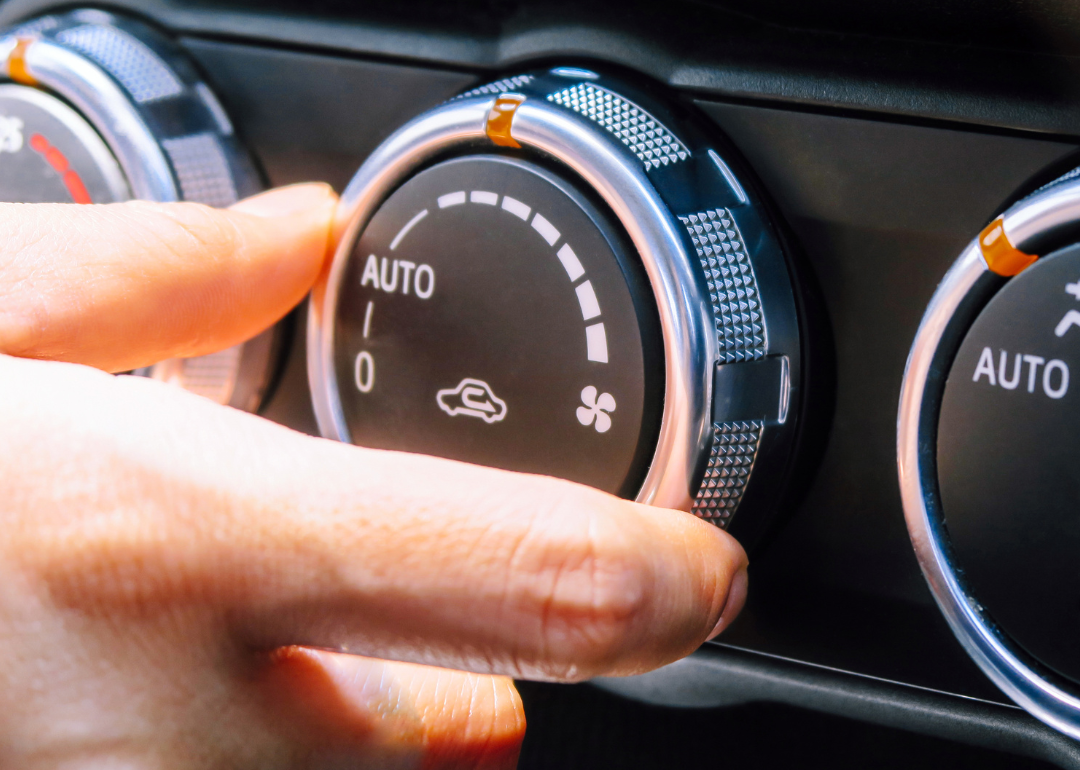
Canva
A/C troubles
A hand adjusts the AC settings in a car.
While escaping the blistering heat by entering your car, you expect to find solace in a cool, refreshing environment. However, air conditioning (A/C) problems often arise during hot weather, leaving you sweltering inside the vehicle. Several factors can contribute to A/C troubles:
Refrigerant leaks
Refrigerant leaks are a common cause of A/C malfunction. Over time, the seals and hoses in the A/C system can degrade, leading to refrigerant leakage. A low refrigerant level will result in diminished cooling performance. If you notice a decline in A/C effectiveness, it is advisable to have your system inspected and recharged, if necessary.
Faulty compressor
The A/C compressor is responsible for compressing and circulating the refrigerant. However, a malfunctioning compressor can hinder the cooling process. Unusual noises, lack of cool air, or warm air blowing from the vents are indicators of a faulty compressor. Timely repair or replacement is crucial to restore A/C functionality.
Clogged condenser
The A/C condenser, located in the front of the car, can accumulate debris, dirt, and bugs during hot weather. This build-up restricts airflow, reducing the condenser’s ability to dissipate heat. Regularly cleaning the condenser can prevent clogs and ensure efficient A/C operation.

Canva
Sun-baked interiors
A man holding a hot steering wheel in side a car.
Hot weather not only affects the mechanical components of your car but also takes a toll on the interior. Here’s how the sun can transform your vehicle into an oven:
Faded dashboard
The sun’s ultraviolet (UV) rays can fade and deteriorate your car’s dashboard, causing it to lose its luster. Prolonged exposure to UV rays can also lead to cracking and warping of interior surfaces.
Sweltering steering wheels and seats
Leaving your car parked under the scorching sun can turn your steering wheel and seats into heat magnets. When you return, you’re greeted with surfaces that can scorch your hands and cause discomfort during your journey.
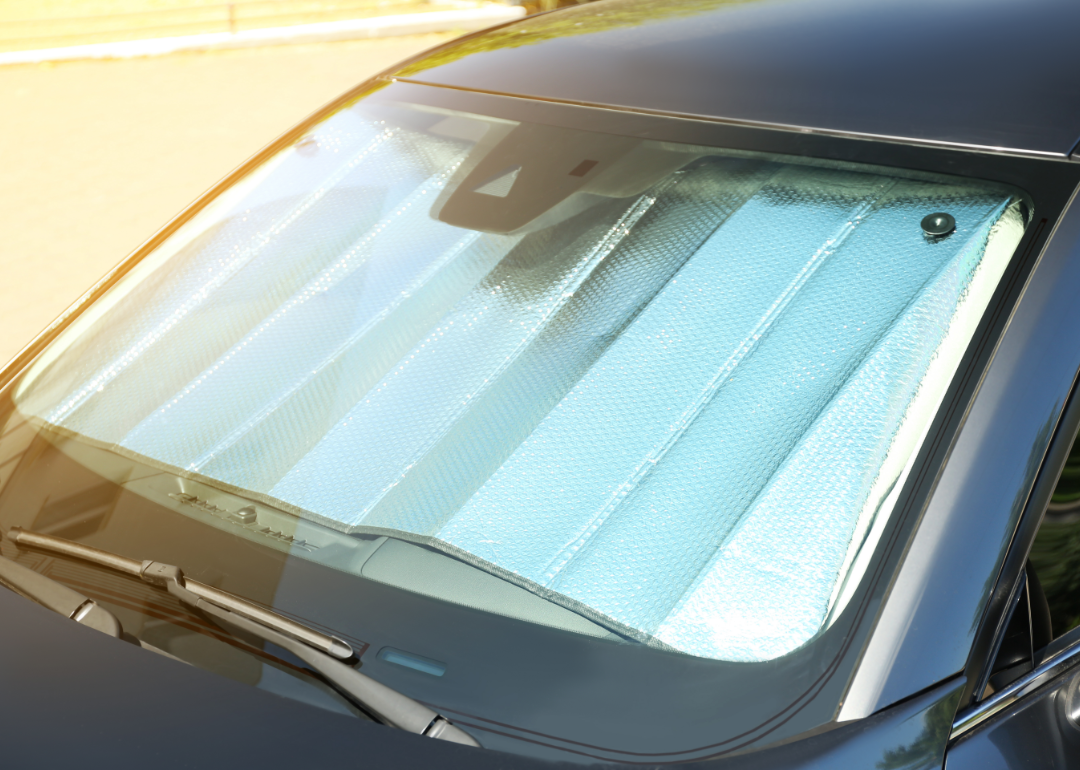
Canva
Solutions to protect your car’s interior
A reflective sun shield under the windshield of a car.
Shade is your ally
Whenever possible, park your car in shaded areas to reduce direct exposure to the sun. Utilize sunshades or windshield covers to shield your dashboard from harmful UV rays.
Seat covers and steering wheel wraps
Invest in seat covers and steering wheel wraps made from materials designed to resist heat. These accessories act as barriers, preventing direct contact between the scorching surfaces and your hands or body.

Canva
Tire troubles
A closeup of car tires on a hot day.
Hot weather poses challenges not only to the mechanical aspects of your car but also to the tires. The scorching pavement temperatures can lead to tire-related issues, including:
Underinflated tires
High temperatures cause the air inside your tires to expand, leading to increased pressure. If your tires are already underinflated, this expansion can push them beyond their recommended limits, increasing the risk of blowouts. Regularly check your tire pressure and maintain it according to the manufacturer’s guidelines.
Overinflated tires
On the other hand, overinflated tires can be just as problematic. Overinflation reduces the tire’s contact patch with the road, compromising traction and stability. It is crucial to monitor your tire pressure and adjust it as necessary to ensure optimal performance and safety.
Uneven tread wear
Extreme heat can accelerate tire wear, especially if your tires are already worn or improperly aligned. Uneven tread wear can diminish traction and handling, increasing the likelihood of accidents. Regularly inspect your tires for signs of wear and seek professional assistance to address alignment issues promptly.
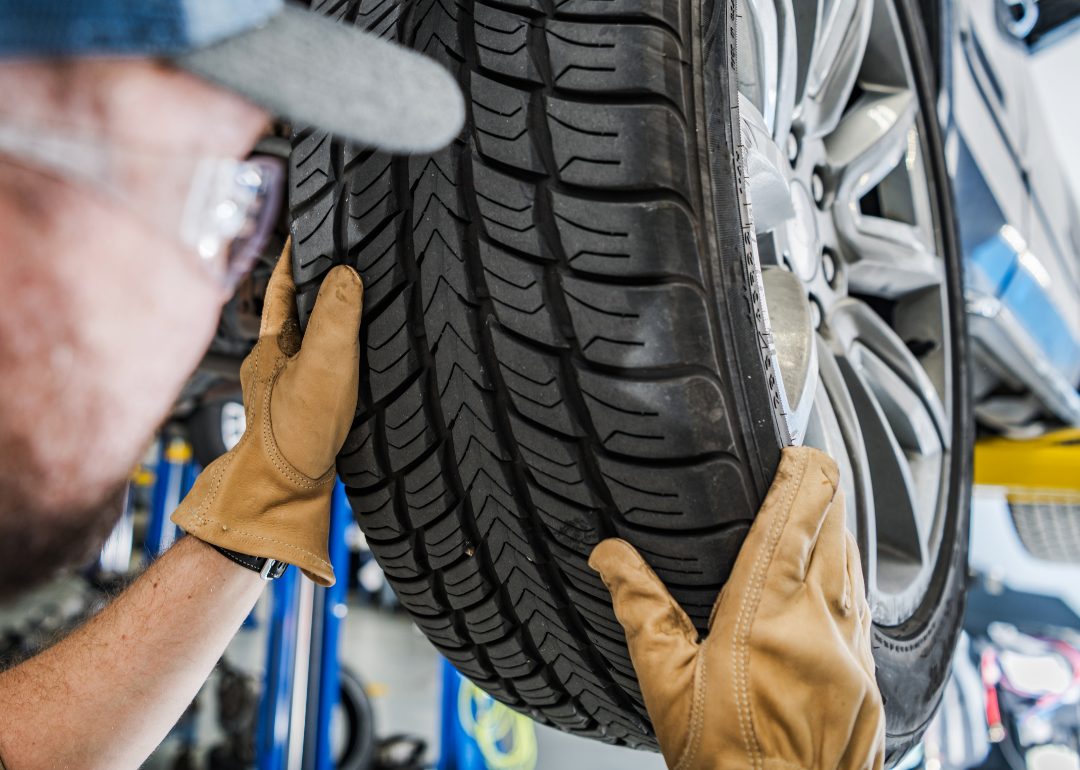
Canva
Solutions to preserve your tires
A mechanic rotates the tires on a car.
Proper inflation
Check your tire pressure regularly and adjust it according to the manufacturer’s recommendations. Avoid overinflation, especially during hot weather.
Rotate and balance
Regularly rotate and balance your tires to ensure even wear. This will extend their lifespan and enhance overall performance.
Tire maintenance
Regularly inspect your tires for signs of wear and tear. Replace them promptly if necessary to maintain optimal safety and performance.

Canva
FAQs
A hand operates a steering wheel in a car with the sun streaming in.
What are the signs of an overheating engine?
Some common signs of an overheating engine include an increase in the temperature gauge, steam or smoke coming from the hood, a strong smell of coolant, and a loss of engine power. If you notice any of these signs, it’s important to pull over and address the issue immediately.
How can I prevent my car’s engine from overheating in hot weather?
To prevent engine overheating, ensure that your coolant levels are adequate and regularly check and replace the coolant as recommended. It’s also important to maintain a properly functioning radiator, inspect and replace worn-out belts and hoses, and avoid driving in extreme heat for prolonged periods.
Why is my car’s air conditioning not cooling properly in hot weather?
There are several reasons why your car’s A/C may not be cooling properly during hot weather. Common culprits include refrigerant leaks, a faulty compressor, or a clogged condenser. It’s best to have your A/C system inspected by a professional to diagnose and address the issue.
Can hot weather cause tire blowouts?
Yes, hot weather can contribute to tire blowouts. When the temperature rises, the air inside the tires expands, increasing pressure. If your tires are already underinflated, this can push them beyond their recommended limits, leading to a blowout. Proper tire maintenance, including regular pressure checks, can help prevent this issue.
How often should I check my tire pressure in hot weather?
It’s recommended to check your tire pressure at least once a month, regardless of the weather conditions. However, during hot weather, it’s a good idea to check your tire pressure more frequently, as the heat can impact tire pressure more significantly.
What should I do if my car’s tires have uneven tread wear due to hot weather?
If you notice uneven tread wear on your tires, it’s important to have them inspected and addressed promptly. Uneven tread wear can affect traction and handling, compromising safety. A professional can determine the cause of the uneven wear, such as misalignment or worn-out tires, and recommend the necessary repairs or replacements.
Are there any specific precautions I should take when driving in hot weather?
Yes, when driving in hot weather, it’s advisable to keep an eye on your car’s temperature gauge, monitor the performance of your A/C system, and pay attention to any unusual sounds or smells. Additionally, it’s essential to stay hydrated, carry extra water for both yourself and your car, and avoid leaving children or pets unattended in a parked vehicle.
Can extreme heat affect other components of my car apart from the engine and tires?
Yes, extreme heat can affect various components of your car, including the battery, belts, hoses, and even the interior. High temperatures can accelerate battery fluid evaporation and lead to belt and hose degradation. Additionally, excessive heat can cause the interior materials, such as the dashboard and seats, to become hot and prone to cracking or fading. Taking preventive measures and providing proper care can help mitigate these effects.
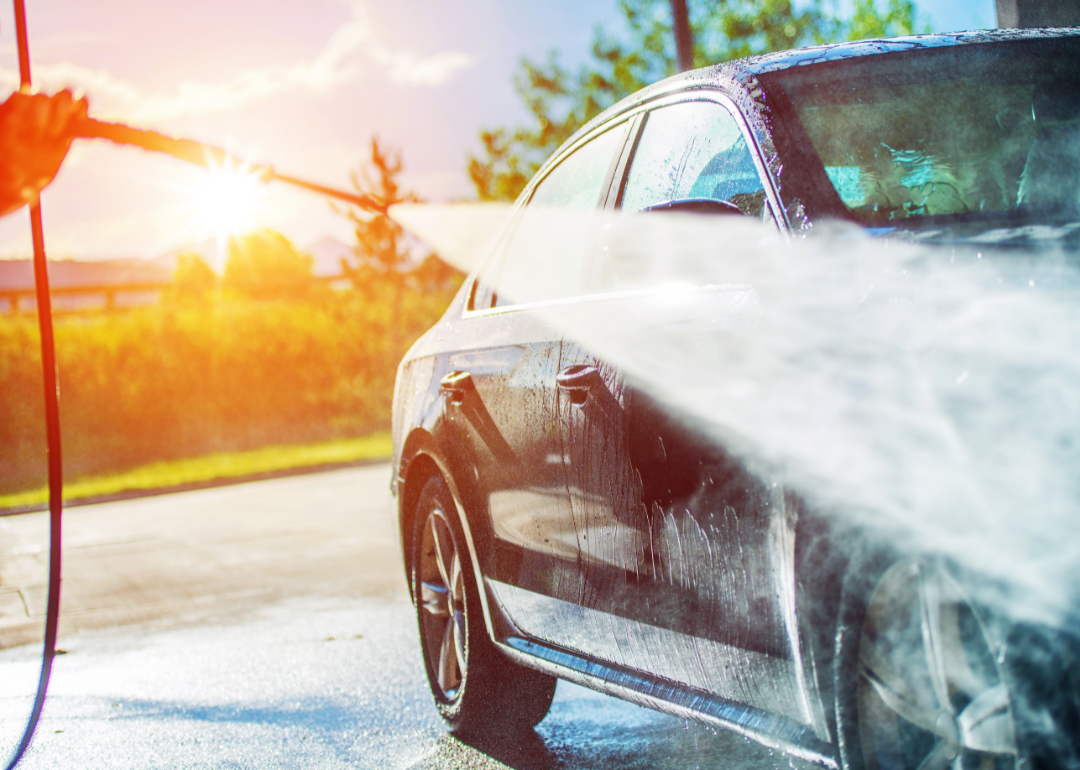
Canva
Bottom line
Water sprays from a hose onto a car in the hot sun.
Hot weather can pose significant challenges for cars, leading to issues such as overheating engines, A/C troubles, and tire-related problems. However, by staying proactive and addressing these issues promptly, car owners can minimize the impact of hot weather on their vehicles.
Regular maintenance, timely repairs, and proper inspections are essential to ensure optimal performance and safety during the scorching summer months. So, keep these tips in mind, take good care of your car, and enjoy a hassle-free driving experience even in the hottest weather.
This story was produced by Way.com and reviewed and distributed by Stacker Media.



